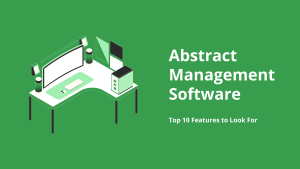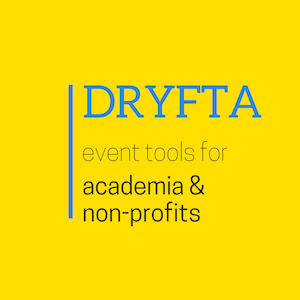Do you still accept abstract submissions through email? If so, we’ve got bad news: You’re probably losing a lot of good data. Even though it’s easy to use and free to set up, email is an incredibly inefficient way to handle scientific data. And no matter how hard you try, it’s not going to get any better.
People have trouble submitting their abstracts on time because they have to use email to send them in, which can be slow and unreliable. Email doesn’t allow you to track who has submitted and when, either—so there’s no way of knowing if someone hasn’t sent in their work yet or just hasn’t sent it at all!
Also because the number of emails sent per day is increasing at a faster rate than the speed at which our brains can process information. In fact, on average, we receive about 121 emails per day—and spend about 10 hours in total dealing with them!
Takeaway: An actual abstract management system will help keep your conference running smoothly!
What is an abstract management system?
You may be wondering, “What is an abstract management software, and what are its benefits?” An abstract management system is a tool that helps to manage your conference submission process. It provides a platform for you to manage the submissions and allows you to keep track of each submission by using a questionnaire. This allows you to easily see which submissions have been received, who has submitted them, when they were received and how long the call for papers was open for submissions. There are also many features available such as auto-assign new submissions into their correct categories, reject or accept individual abstracts after reviewing them via review form, generate reports on all information relating to your conference such as number of submissions received, and number of submissions accepted/rejected.
Some of the key features include:
- Easy setup
- Simple user interface
- Can be used with multiple conferences at once
With these features in mind, it could help make running any conference much easier than using traditional methods like spreadsheets or Word documents! If this sounds interesting then keep reading below where I will explain some more details about how it works!
Build and manage a conference website
With an abstract management system like Dryfta, you can create and manage a conference website in a matter of minutes. Your new site will allow you to:
- Build an online landing page for the speakers, sessions and events at your conference.
- Launch a forum where attendees can discuss topics related to your event.
- Host an interactive event schedule that lists sessions and presentations
- Create contact forms so that people can submit their questions or comments directly from your website without having to leave it open all day long!
- Send out newsletters with regular updates on progress being made toward holding your next successful meeting (and make sure those who have already signed up don’t miss out).
Create, collect, and review papers
The most important part of your paper submission process is creating a system for managing the submissions. Not only will this make it easier for you to collect and review papers, but it’ll also help build trust from authors that you’re serious about getting their work published.
When building your system, there are three main components you want to keep in mind: collecting, reviewing and automating.
- Collecting submissions – It’s essential that you have a way for people to submit their work electronically so they can be easily accessed at any time by reviewers or editors (or yourself!). Some abstract management platform like Dryfta allow authors to upload files directly into the program while others require them to attach an email with attachments as part of their submission process.
- Reviewing papers – When it comes time for reviewing papers, what kind of functionality do you need? Do the reviewers need access rights? Can they leave comments on individual pages or just on one document that collects all comments together? Are there specific requirements around font size or page layout? If so then consider using an online review submission tool like Dryfta instead which offers these features out-of-the-box without having additional setup costs.
- Automating tasks – Once everything is set up properly then automation becomes possible! For example: if each reviewer has access rights then automatic notifications can let them know when new abstracts are assigned to them; if there are specific requirements around characters and words limit, then automated tools could check incoming submissions against those constraints before sending them along for human evaluation.
- Having team members help manage these processes can save both time (in terms of labor) and money (that might otherwise go towards hiring contractors).
Track abstracts and papers
Whether you’re an academic, a researcher, or a student, you probably deal with abstracts and papers. Here are some of the things that make managing them easier:
- A single system for tracking both abstracts and papers. Some systems only allow you to track one or the other; other less-robust platforms require manual entry of information into two different databases (which can lead to data entry mistakes).
- Easy-to-use interface. You don’t have time for clunky software that’s difficult to navigate. You need something intuitive and easy on your eyes so you can focus on what matters most: submitting more great research!
- A solution designed specifically for scientists and researchers like yourself who are trying to do their best work in an increasingly competitive field where every paper counts toward tenure decisions, grant funding opportunities, etc.
Review papers with the team
As a team, you need to review every paper before it gets accepted and submitted to the conference. If your team is large, consider dividing up the reviewing among subgroups within your group.
When you receive an abstract from an author, begin by reading through the paper to see if it is even applicable for submission at all (e.g., does it meet length requirements?). Make sure there aren’t any grammatical errors or typos that could have been caught by spell-check or proofreading software. If there are mistakes like these, let the author know that they need to be corrected before proceeding further with peer review.
Once you’ve decided whether or not a particular abstract is worth reviewing, assign it to prospective reviewers. The rating forms should be considered guidelines rather than strict rules; ultimately it comes down to your own personal judgment when deciding what score each paper deserves on its merits.
Automating the process
Now that you’ve collected your abstracts, it’s time to start the review process. You could do this manually, but why? In the 21st century, there are plenty of tools for automating this process.
Here are some ways you could automate the collection and review process:
- Automating the submission process means that no one will have to manually enter any information about abstracts or authors into a database. Instead, authors can submit their abstracts through an online submission form which sends them directly into your platform’s database. This saves you time and makes things easier for everyone involved!
- Once an author submits his or her paper online through a web-based submission form, he/she will receive an automated confirmation email letting him/her know that they’ve successfully submitted their work to you and telling him/her when they should expect notification as well as instructions on how to check whether his/her abstract has been accepted (or rejected). This also helps save time because no one needs to call anyone else at all!
- The next step is assigning abstracts to reviewers. You can automate this process by setting up your platform so that reviewers are automatically assigned a certain number of abstracts per day. This way no one has to manually assign papers or contact them anymore! After reviewing an abstract, reviewers will be able to submit their comments online through our platform’s interface. These reviews will then be sent back to authors as part of an automated email notification along with any decisions made about their submission status.
Use an abstract management system instead of email
As a conference organizer, you know that managing abstracts is time-consuming. You have to receive them, format them, and then send them on to the reviewers. If you don’t use an abstract management system—which lets you do all of this in one place—you’ll be spending more time than necessary on things like formatting and sending out emails. But with a system that manages your workflow for you, there’s more time for actually organizing conferences!
In addition to making it easier on yourself as an organizer, using an abstract management system will also help manage your team of reviewers and presenters (if they’re submitting via the same platform). It’ll also help with managing submissions because if everyone is submitting through the same tool there’s no need for multiple email threads or spreadsheets with different people working from different sources: everything can go through one easy-to-access location where everyone can follow along easily!
Time for a change
If you’re still managing abstracts by email, it’s time to change that! An abstract management system will help you organize your conference and track submissions in one place. You can even use this tool to create an online registration form and collect ticket payments, or send out automatic reminders before the deadline.






